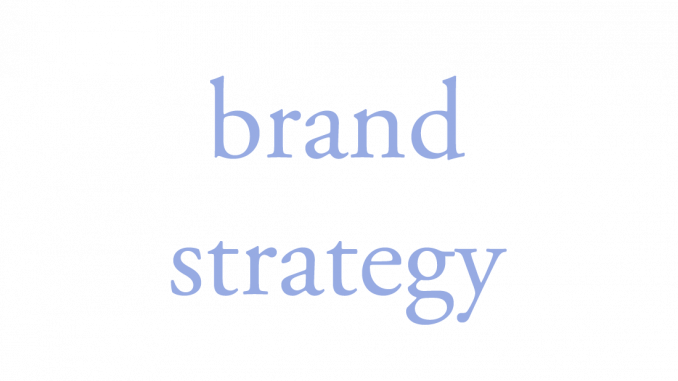
08 Jul Brand Strategy for Competitive Industries
in Blog, Branding
Brand strategy is such a broad term that we should start with a definition. In this blog post, we’ll be talking about brand strategy in terms of how to stand out from competitors in your industry. Being a digital marketing agency, we break down brand strategy into your marketing tactics, paired with your branding and your business goals.
That’s a lot of things that need to be in synch with this definition, so let’s get a little bit more specific. We’ll use a counseling practice for the following examples.
Your marketing tactics are related to the different touch-points and channels you have to reach your customers, including: social media, email marketing, advertising, and SEO. As an example, one marketing tactic would be posting to Instagram three times per week.
Your is your overarching messaging and aesthetic style. Based on the example above, your three Instagram posts would use the same brand colors / fonts / image styles, paired with copywriting in your brand voice. Whether your brand voice is friendly, informational, casual or sophisticated, it’s consistent throughout all of your marketing.
Finally, your business goals. (Hopefully this piece is the most straightforward!) Your business goals will be unique to your specific business based on which stage of growth you’re in (startup or established), your business size (solopreneur vs 50+ employees), and the current state of your industry. For example, a business goal could be bringing in two new clients per month, or growing practice revenue by 10% year over year.
Now that the basics of brand strategy are clear, we’ll move on to general brand strategy recommendations for competitive industries.
Brand Strategy for Health & Wellness
The health and wellness industry is intensely competitive, and it grows every year. From licensed counselors to coaches and yoga studios to hair salons, health and wellness is a broad category with some overarching themes.
Marketing Tactics – Health and wellness businesses are typically image-heavy businesses. Use platforms that correspond with your target audience and your available visuals. For example, if you take videos, Instagram and TikTok would be ideal social media channels. Advertising on Facebook / Instagram would be another great marketing tactic.
Branding – Branding is especially crucial in the health and wellness industry to stand out from the crowd. Your branding also helps display your brand at a glance – what’s important to you, to your clients, and what kind of tone you want to set in your business.
Business Goals – There’s a variety of businesses included under the health and wellness umbrella, so there are many different types of business goals to choose from. Here are a few examples:
Brand Strategy Consulting & Finance
Again, there’s a lot of variation within consulting and finance, but we’ll give general recommendations that clients typically find helpful as a jumping-off point.
Marketing Tactics – Numbers and results-focused industries likely don’t have as many images to share publicly (save the charts & graphs for client portfolios!). While some social media strategy is always a good idea, posting regularly doesn’t have to be your focus. Tactics like blogging for SEO and email marketing engage your client-base, helping you provide niche, relevant information to clients about the stock market or their industry segments.
Branding – Branding for consulting and finance typically blends high-end sophistication (we’re talking about money, after all!) with accessible copywriting tones to explain more technical information to prospective clients. You want to convey professionalism and expertise with some education.
Business Goals – Business goals for consulting and finance blend measuring your work in terms of client performance and your own internal KPIs. Client performance will vary depending on the work you’re doing (ex. sales growth vs. meeting implementation deadlines), and internal KPIs may be similar to the list above, under health and wellness.
Brand Strategy for Retail
Marketing Tactics – With product-based business, you’ll want to use channels where you can showcase your products. A mix of Instagram, TikTok, email marketing, and advertising on Facebook / Instagram are some marketing tactics to experiment with.
Branding – In a highly competitive industry like retail, having differentiated branding can help you attract and retain customers. Make your brand clear with your colors, fonts, and brand voice, so that no matter where your customers see your marketing materials, they can easily attribute them to your brand. This is easier said than done, but keeping your colors, fonts and language consistent is a great starting place!
Business Goals – Retail business goals tend to be driven by sales goals and moving seasonal inventory. Business owners can also consider advertising metrics like impressions (for brand awareness) and clicks (for driving website traffic).
The Takeaway
Brand strategy isn’t a secret. While every business’ formula will be slightly different, keep coming back to your marketing tactics, your branding, and your business goals. Adjust each element according to different phases in your business, and remember to try new things if you’re not seeing the results you want with the same marketing tactics or branding!

Leave a Reply